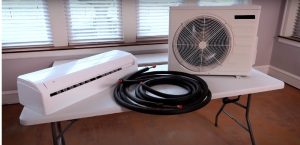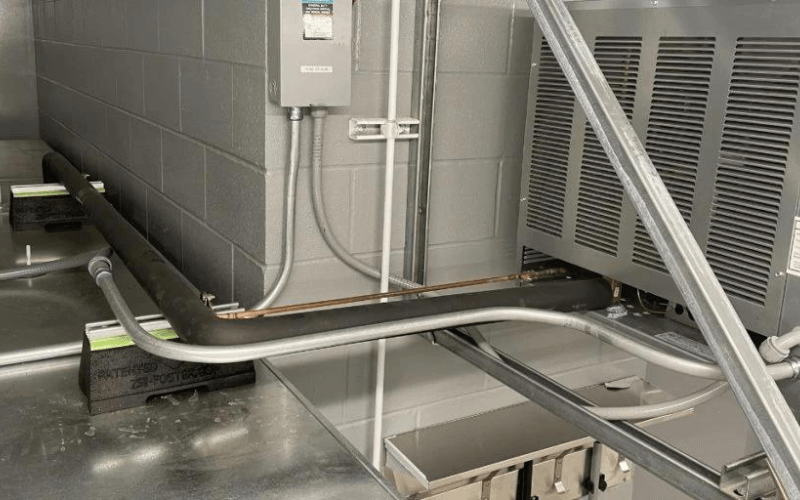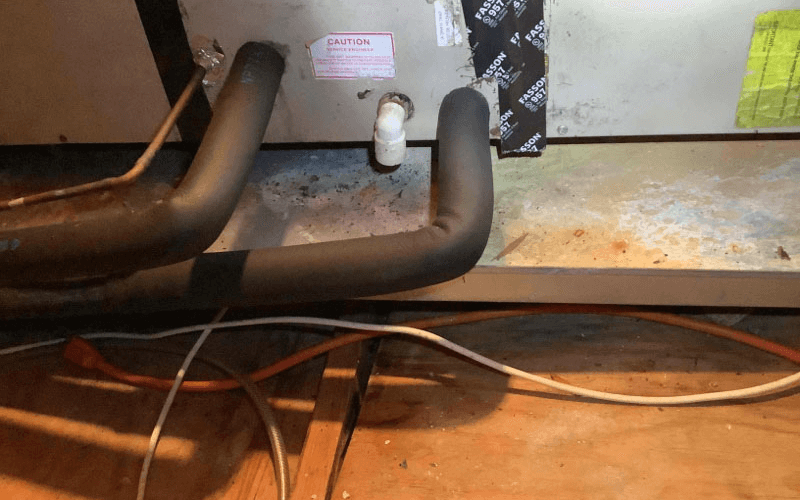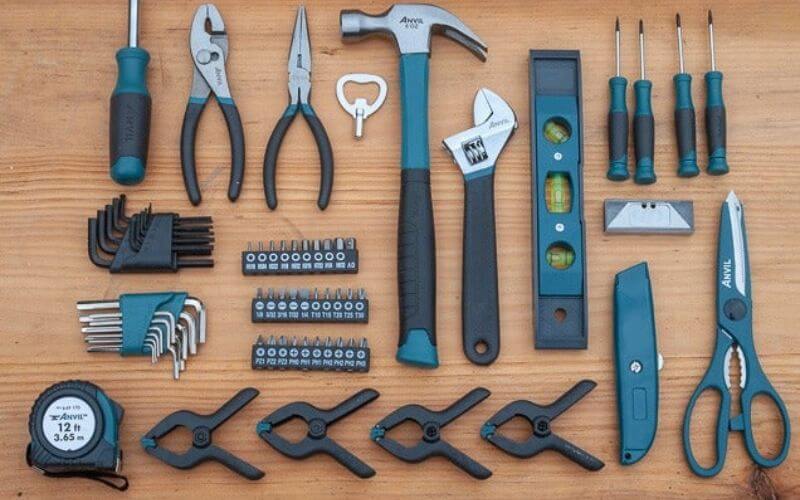An energy-efficient appliance that heats water as it passes through it without the use of a storage tank is a tankless water heater, often referred to as an instantaneous, continuous flow, inline, flash, on-demand, or instant-on water heater. It does away with the requirement to keep a sizable stock of pre-heated water, lowering standby energy losses. But for it to work at its best, it needs routine maintenance, just like any other gadget.
Table of Contents
ToggleDraining the water heater is one essential maintenance procedure that aids in removing mineral deposits and debris that may build up and obstruct the water flow. Consequently, How To Drain The Tankless Water Heater? First, shut off the power source and close the water valves on the tankless water heater. Connect hosing lines to a bucket and a water heater.
Drain the hot water line first, then the cold water line into the bucket. Follow the manufacturer’s directions to flush the appliance, which often calls for a circulation pump and a cleaning solution. Connect everything back up after flushing, then restart the power. Continue reading to learn more in-depth.
Why Should a Tankless Water Heater Be Drained?
It’s essential to drain a tankless water heater to get rid of sediment and mineral buildup that could collect and prevent the water from flowing. These deposits may clog the filter and hose, reducing water flow and leading to a full unit shutdown. A tankless water heater’s efficiency, longevity, and warranty may all be preserved by flushing it at least once a year. It could be necessary to cleanse the unit more frequently, like every six to nine months, in places with hard water, which has greater concentrations of calcium and magnesium.
Also, Read: Does A Tankless Water Heater Need An Expansion Tank?
Signs That Your Tankless Water Heater Needs To Be Drained.
Here are several warning indications that your tankless water heater needs to be drained and flushed:
- Reduced water pressure or flow.
- Erratic water temperature.
- Strange sounds like pounding, exploding, or crackling.
- Alerts for maintenance or error codes.
- Maintenance advice from the manufacturer.
How to Drain a Tankless Water Heater?
Switch Off The Isolation Valves And The Gas.
You must first shut off the isolation water valves that connect to your water heater. These valves contain red exhaust valves for hot water and blue inlet valves for cold water, respectively. A valve is closed when it is perpendicular to the pipe. If the valve is pointing in the same direction as the pipe, it will open. Always make sure the valves are closed. You must also turn off the gas valve by following the same steps as above. You don’t need to switch off the power to your water heater.
Connect The Hoses.
The hoses need to be attached to the inlet and outlet valves. Before connecting the two valves, you might need to remove the service port caps from them. If you still need to buy a flushing kit with water hoses, you might also use water machine hoses. After connecting the hoses to the valves, use pliers to make sure they are watertight. You don’t want the water to start leaking while you are flushing.
Connect Hoses To The Circulation Pump.
At this point, utilize the circulation pump that was supplied with your water heater flushing package. Put the other end of the circulation pump in the bucket and fasten it to it. The discharge side of the pump only needs to have the inlet hose connected. You can place the exit hose in a pail because the system you have set up will guarantee that the cleaner passes through the building and removes any magnesium and calcium.
Add A Cleaning Substance.
Once everything is set up, add the cleaning agents to the bucket. The bucket must initially hold at least one gallon of water.
Quick tip: If you don’t have any other cleaning supplies, you can always use vinegar. You will need to apply more vinegar and give the circulation more time, though. Use a minimum of 2 to 3 gallons.
Also, Read: How To Insulate Tankless Water Heater?
Open The Valves.
The pump must now be turned on, and the water valves must be left open to allow water to flow through them. There must be a minimum of 45 minutes and a maximum of 1.5 hours for everything to circulate. Give yourself at least an hour. The recommended circulation time is listed in the cleaning agent’s instruction handbook. If you’re using vinegar, you should let it run for at least 1.5 to 2 hours.
Rinse Out The Cleaning Chemical With Water.
Stop the circulation by turning off the pump once the stipulated amount of time has passed. The hose should then be disconnected from the inlet valve after closing both valves. Any remaining vinegar or cleaning agents should be drained away right once. To accomplish this, keep the hose connected to the hot water output valve and turn on the cold water inflow valve. Water will be pushed up the system in this way, flushing out everything through the hose on the hot water side. After letting the water flush for 5 to 10 minutes, shut off the service port and the cold water inlet valve once more. At this point, just cut the remaining hose off.
Reconnect All The Pieces.
Once you’ve flushed the tankless water heater, everything may be put back in its original place. Turn on the gas and water valves after reconnecting the service port caps.
What Happens When A Water Heater Won’t Drain?
If the water won’t drain from the tank or trickles out, you most likely have a clog. To handle it, we suggest getting in touch with an authorized plumber from Apollo Home.
Why Not Drain The Water Heater?
Contrary to common perception, there are times when it’s better to hold off on draining your water heater. Why? Because if the water hasn’t been emptied in a while, the sediment will generate a tiny movement. Heated areas form on the tank’s bottom as a result.
The flame might overheat the tank in some spots, slowly deteriorating the parts. A small gap remains after the failures. In a funny twist, the sediment plugs the hole.
However, there is a significant probability that a leak will develop within two to three days if you flush your water heater after years of sediment accumulation.
Conclusion.
To increase a tankless water heater’s lifespan, keep it functional, and preserve the warranty, it should constantly be drained as part of regular maintenance. Follow the manufacturer’s directions exactly, and if you have any doubts about any step of the process, see an expert. With routine maintenance, your tankless water heater can function properly and last for many years.
FAQ
Is draining a tankless water heater necessary?
Water heated by tankless systems does so after passing through them, though. The same materials gather and degrade on the surface of the tank’s heating chamber. Because tankless water heaters can last up to 20 years, learning how to drain one will help you get the most out of your investment.
When should I drain my tankless water heater?
Just like a tank device, tankless water heaters require cleaning once a year. Homeowners with hard water may consider washing and cleaning the unit even more frequently, possibly every six to nine months, due to the large levels of magnesium and calcium contained in hard water supplies.
How can I manually flush my tankless water heater?
Flushing is an internal maintenance task that you or a plumber can complete. However, since the items being cleaned are delicate, a plumber should perform any external maintenance. Interior of a tankless water heater. Flushing is used to clean the unit’s pipes and Heat Exchangers.





















